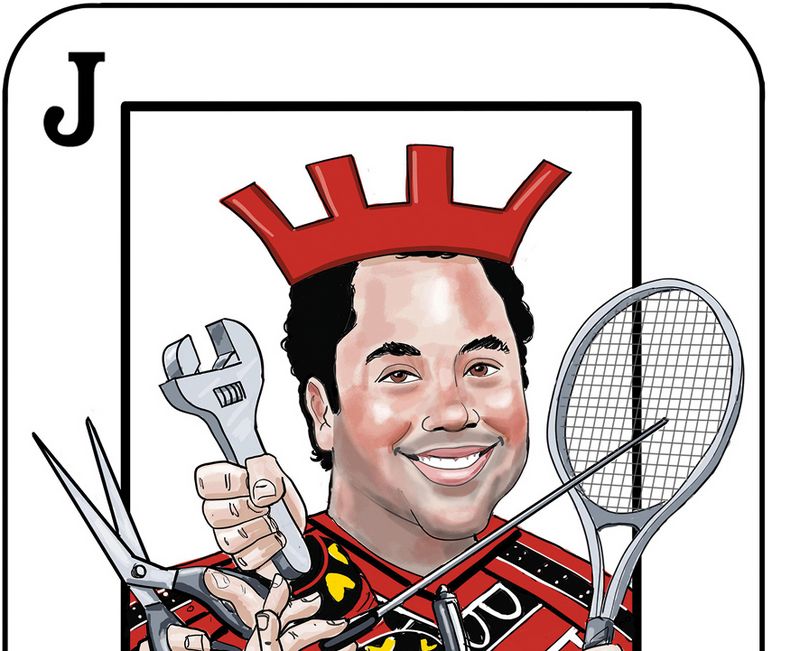Jack of all trades:
Bank of America’s equity-linked services proved in high demand because of innovative solutions offered to clients across industries, making it IFR’s Americas Structured Equity House of the Year.
![]()
The year did not turn out as expected in the US, beginning with concerns over tightening interest rates that gave way to dovish central bank policy that drove historic returns across equity and credit.
Bank of America stood front and centre in the resurgence of convertible bonds as the nexus of equity and credit, with bookrunner credit of US$6.9bn across 37 issues during the awards period to give a 14.5% market share and top ranking in the US equity-linked league table.
“We are at the point where we are starting to fire on all cylinders,” said Shiv Vasisht of strategic equity solutions, a group formed in 2017 to combine traditional CB underwriting with equity derivatives. “We are trying to get away from products; this is about coming up with solutions for clients.”
US CB issuance totalled US$47.6bn, a post-crisis high, and BofA was evident throughout, underwriting 17 deals combined in the traditionally strong TMT and healthcare sectors as well as industrials (8), consumer (6), FIG (4), and real estate (2), according to Refinitiv data.
Part of BofA’s rise was pure power play. The bank, along with others, helped meet the equity needs of utilities, participating as an underwriter on three-year mandatory convertibles for Southern Co (US$1.725bn), DTE Energy (US$1.3bn) and Aqua America (US$690m).
“If you think back to 2015-2016 they were big years for mandatories,” said Vasisht. “As those deals rolled off, we saw a lot of demand for new yield-oriented product.”
That rollover presented the opportunity to push boundaries.
Chipmaker Broadcom, an investment-grade credit with US$100bn-plus market cap, exploited that demand with a US$3.7bn three-year mandatory convertible preferred in September.
BofA convinced Broadcom management on the merits of selling equity, rather than straight debt, to provide funds for acquisitions.
Broadcom’s MCB, IFR’s Americas Structured Equity Issue of the Year, is a potential game changer for the asset class.
There were times of pure opportunism.
Furniture retailer RH landed US$350m from the sale of a five-year CB in September that saw it paying no coupon with a derivative employed to offset dilution to a 100% premium.
BofA, sole bookrunner, launched marketing of RH’s “potential offering” intra-day at a US$300m base deal size with talk of a 0% coupon and conversion premium of 25%-30% – if a deal was not brokered within the company’s share-price target, there would be no deal, a real risk as RH CEO Gary Friedman had pulled out of a similar exercise a year earlier.
RH used the funding to repay higher-cost bank debt.
Within a week, BofA exercised a US$50m greenshoe option.
There were echoes of RH in a multi-faceted recapitalisation by fashion brand Guess in April that was underpinned by a CB, with BofA handling all the related derivatives. The deal was reminiscent of an RH transaction in 2014, not entirely surprisingly as Guess’s CEO was co-CEO of RH at the time.
The front-end saw BofA sell a US$275m five-year CB at a 2% coupon and 37.5% conversion premium, the aggressive ends of 2%-2.5% and 32.5%-37.5% talk and up from the US$250m base deal marketed.
The back-end saw Guess buyback US$26m of stock concurrently, another US$24m in the aftermarket, and an additional US$170m through an accelerated share repurchase.
To drive home the point, Guess spent US$33m of the proceeds on a call spread to offset dilution to a 150% premium.
The CB, call spread, concurrent buyback, and ASR all required stock borrow – the buyback-plus-ASR on their own equated to roughly 12% of company.
“ASRs require a lot of stock borrow for the banks to be able to deliver to the company on day one,” said Andrew McGrath, a vice-president in BofA’s strategic equity solutions group. “The convert and ASR were linked: you couldn’t do an ASR if the convert ate up all the borrow.
“We had to think about whether the stock borrow could support all four legs.”
BofA, once again, exercised the entire US$25m greenshoe to increase the offer size to US$300m.
Guess highlighted the multi-dexterous aspect of BofA’s equity-linked practice.
Fees earned by the group this year are roughly evenly split between CB underwriting and derivatives, said Vasisht, although ASRs, margin loans, collars and other derivatives are rarely disclosed publicly.
According to Refinitiv numbers, BofA earned US$133.5m this year from CB underwriting alone – double that, and it’s clear that Vasisht and group are earning their keep.
To see the digital version of this report, please click here
To purchase printed copies or a PDF of this report, please email gloria.balbastro@refinitiv.com

